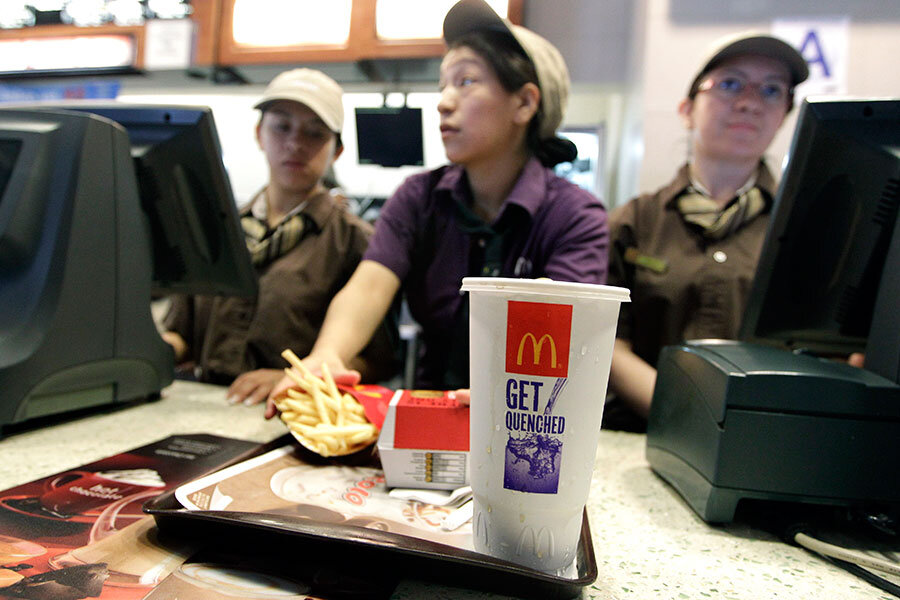What the new job numbers don't say
Loading...
The big economic news Friday was that the United States economy added 255,000 new jobs in July, more than expected.
But beyond the much-touted employment numbers was another development that offers at least a spark of hope for American workers: Wages are growing at their strongest annual pace in seven years, according the Labor Department figures.
The wage gains are still modest. Hourly earnings have risen 2.6 percent during the past year, faster than inflation but hardly robust growth.
The question now is whether the report sets the stage for stronger growth or points to a new normal of solid but unspectacular improvement.
One hopeful sign is that a bevy of high-profile companies in the past six months have raised or announced they will raise wages. Also, when employers do raise pay, some are seeing improved morale and more productivity.
But even after seven years of recovery from the Great Recession, wage gains for workers have been dismal, especially at the bottom rungs of the income ladder. Adjusted for inflation, pay for the typical middle-class worker has advanced just 5 percent in the past decade, according to separate government data.
Fundamental changes in the economy might mean that broad wage increases might simply be harder to sustain than in the past. Many economists are taking a wait-and-see attitude.
Pay inequality
In the past, when workers became scarce, pay went up as employers began to compete for employees.
Today, workers are more scarce. There are only 1.35 unemployed workers for every job opening – a 16-year low, according to the latest government figures. The July unemployment rate stands at 4.9 percent, a level many economists say should start boosting pay more robustly.
The lack of progress has frustrated many Americans, which some analysts say has contributed to the tone of this year’s presidential campaign. Something has changed.
“I think the old relationship between shrinking unemployment and rising wages is permanently broken,” notes Robert Reich, former Labor secretary and now chancellor’s professor of public policy at the University of California at Berkeley, in an email.
He adds that “it’s easier than ever for companies to outsource jobs abroad, and we're witnessing a vast wave of labor-supplanting technologies. As a result, I don't expect the pay of hourly workers to rise robustly.”
This development reflects a now-familiar dynamic: robust raises at the top are counterbalanced by little or no progress at the bottom of the pay scale.
“The last recession really sped up the trend that had been happening through good times and bad over the past 30 years,” says Ben Frost, global product manager for pay data at Korn Ferry Hay Group in London.
Employers are raising pay for highly skilled (and already highly paid) workers. But “we see minimal pressure on pay at the lower end.”
Nevertheless, when employers do boost worker pay, some of them see a return on the bottom line.
Raising salaries, bigger benefits?
That’s the case for McDonald’s, which last year raised wages 10 percent (from $9.01 to $9.90 an hour) and allowed workers to earn up to five days of paid vacation a year. (The move only covers the 10 percent of workers at company-owned stores. Most McDonald’s restaurants are owned by franchisees.)
This past March, the restaurant chain’s president of US sales told analysts the move had reduced employee turnover and raised customer satisfaction. The company’s stock is up some 20 percent since the pay raises went into effect.
Wal-Mart, which boosted pay to $9 an hour last year and $10 an hour this year, reports seeing more of its employees spending money in its stores.
The moves don’t come close to meeting activists’ calls for a $15 an hour minimum wage. But in California, which is slated to move gradually toward a $15 minimum, the pay raises already enacted have helped improve business, according to Bill Phelps, co-founder and chief executive of Wetzel's Pretzels, a California fast-food chain. When California raised the minimum wage from $8 to $9, same-store sales increased by 8 percent, he told CNBC earlier this year. When the wage went to $10, sales rose 7 percent.
In the past six months, JPMorgan Chase, Starbucks, Target, and United Airlines have also announced or implemented pay raises. That's perhaps a sign they're either feeling the pressure of a strong economy – or catching on to the benefits of improved morale.
In San Diego, union leaders had for two years tried to convince city leaders that emergency dispatchers needed a big boost in pay. Nothing happened until this spring, when two crucial 911 calls, involving the death of an infant, went unanswered.
That incident, and follow-up reports of substandard response times to calls, spurred the city to action. Mayor Kevin Faulconer met with the local union to address staffing problems and low morale. Already due to get an 11.6 percent raise in two chunks starting in 2018, the dispatchers got an extra 15 percent raise, with the first installment going into effect last month.
“Mayor Faulconer has been incredible to work with on this issue,” says Mike Zucchet, general manager of the San Diego Municipal Employees Association. “That included not only agreeing to make the compensation more competitive, but also making management changes and a number of operational changes (like shift schedules) that have also dramatically improved staffing and morale.”








